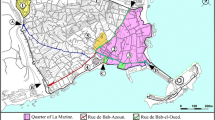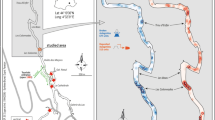Abstract
Research into and conservation of geological heritage and the use of the knowledge gained for the education of the general public lay the groundwork for the creation and consolidation of specialised museums and the dissemination of knowledge among a more diverse audience. In this way, resources linked to Geology will become a territorial development factor and move societies to consider them as indispensable resources for their benefit. This, along with heritage laws, will ensure that these elements are provided with the stewardship to ensure their long-term care and maintenance. This action plan is being carried out with the geological and palaeontological heritage in some places of the province of Teruel (Spain) where, even in remote areas with little more than one inhabitant per square kilometre, the research, development and innovation have resulted in various museography actions in dinosaur sites. The Dinosaur Route in a small village called El Castellar, which already has other tourist attractions related to “terrible lizards”, is one example of research being placed at the service of territorial development in rural areas. The route is a 2.3-km walking trail that consists, mainly, of two dinosaur fossil sites that have been enabled for tourist visits which have great educational value for all audiences: Camino El Berzal, with tracks, and San Cristóbal, with various original bones of a stegosaurid. The latter is the first site in Spain where dinosaur fossils can be seen in situ in a permanent exhibition.














Similar content being viewed by others
References
Aberasturi A, Ferrer R, Casas-Ochoa E, Cirugeda-Salvador L, Del Fresno-Ruiz A (2008) Yacimiento “El Pozo” (El Castellar, Teruel): Realización de moldes y réplicas de huellas de dinosaurio. Kausis 5:77–84
Aguirrezabala LM, Viera LI (1980) Icnitas de Dinosaurios en Bretún (Soria). Munibe 32(3–4):257–279
Alcalá L (2018) Dinópolis, Halfway between amusement park and science museum: how to develop Geotourism in a region undergoing depopulation. International Journal of Geoheritage and Parks 6(2):40–71
Alcalá L, Mampel L, Royo-Torres R, Cobos A (2014a) On small quadrupedal ornithopod tracks in Jurassic-Cretaceous transition intertidal deposits (El Castellar, Teruel, Spain). Spanish Journal of Palaeontology 24(2):183–190
Alcalá L, Pérez-Lorente F, Luque L, Cobos A, Royo-Torres R, Mampel L (2014b) Preservation of dinosaur footprints in shallow intertidal deposits of the Jurassic-Cretaceous transition in the Iberian Range (Teruel, Spain). Ichnos 21:19–31
Aurell M, Bádenas B, Canudo JI, Castanera D, Garccía-Penas A, Gasca JM, Martín-Closas C, Moliner L, Moreno-Azanza M, Rosales I, Santas L, Sequero C, Val J (2019) Kimmeridgian-Berriasian stratigraphy and sedimentary evolution of the central Iberian Rift System (NE Spain). Cretac Res 103:104153
Ballano V, Belloc A, Fraguas S, González L (2008) Intervención de conservación en el yacimiento de icnitas de dinosaurio “El Pozo” (El Castellar, Teruel). Kausis 5:69–76
Barco JL, Ruiz-Omeñaca JI, Canudo JI, Cuenca-Bescós G, Amo-Sanjuán O, Pérez-Lorente F, Rubio C, Herrero MA (2004) Guía del Parque Paleontológico de Galve. Ayuntamiento de Galve y Paleoymás, Zaragoza
Belvedere M, Castanera D, Meyer CA, Marty D, Mateus O, Camilo Silva B, Santos VF, Cobos A (2019) Late Jurassic globetrotters compared: a closer look at large and giant theropod tracks of North Africa and Europe. J Afr Earth Sci 158:103547
Benito MI, Cobos A, Más R, Alcalá L, Campos-Soto S, Fernández L, Quijada E, Royo-Torres R, Suárez-González P, Verdú FJ (2015) “Walking on tides”: sedimentary controls on dinosaur tracks formation and preservation in the Barremian coastal-alluvial to tidal-flat deposits of SE Spain (W Penyagolosa Subasin, Maestrat Basin). Tidalites 2015: The 9th International Conference on Tidal Sedimentology. Puerto Madryn, Chubut, Patagonia (Argentina), pp. 117–120
Burillo Cuadrado MP, Rubio Terrado P, Burillo Mozota F (2019) Estrategias frente a la despoblación de la Serranía Celtibérica en el marco de la política de cohesión europea 2021-2027. Economía Agraria y Recursos Naturales 19(1):83–97
Campos-Soto S, Cobos A, Caus E, Benito MI, Fernández-Labrador L, Suárez-González P, Quijada E, Mas R, Royo-Torres R, Alcalá L (2017) Jurassic Coastal Park: a great diversity of palaeoenvironments for the dinosaurs of the Villar del Arzobispo formation (Teruel, E Spain). Palaeogeogr Palaeoclimatol Palaeoecol 485:154–177
Campos-Soto S, Benito MI, Cobos A, Caus E, Quijada IE, Suarez-Gonzalez P, Mas R, Royo-Torres R, Alcalá L (2019) Revisiting the age and palaeoenvironments of the Upper Jurassic-Lower Cretaceous? Dinosaur-bearing sedimentary record of eastern Spain: implications for Iberian palaeogeography. J Iber Geol 45(3):471–510
Castanera D, Barco JL, Díaz-Martínez I, Herrero-Gascón J, Pérez-Lorente F, Canudo JI (2011) New evidence of a herd of titanosauriform sauropods from the Lower Berriasian of the Iberian Range (Spain). Palaeogeogr Palaeoclimatol Palaeoecol 310:227–237
Castanera D, Pascual C, Canudo JI, Barco JL (2018) Bringing together research, geoconservation and reaching a broad public in the form of a geotourism project: the Ichnite Route of Soria. Geoheritage 10:393–403
Cobos A, Alcalá L (2018a) Palaeontological heritage as a resource for promoting geotourism in the rural setting: El Castellar (Teruel, Spain). Geoheritage 10(3):405–414
Cobos A, Alcalá L (2018b) Geolodía 18 (Teruel) -Geolonoche: huellas de dinosaurios a la luz de la Luna-, Instituto de Estudios Turolenses, Teruel
Cobos A, Gascó F (2012) Presencia del icnogénero Iguanodontipus en el Cretácico Inferior de la provincia de Teruel (España). Geogaceta 52:185–188
Cobos A, Gascó F (2013) New vertebral remains of the stegosaurian dinosaur Dacentrurus from Riodeva (Teruel, Spain). Geogaceta 53:17–20
Cobos A, Mampel L, Royo-Torres R, Espilez L, Alcalá L (2005) Nuevos yacimientos de icnitas de dinosaurio en Formiche Alto (Teruel). Geogaceta 38:19–22
Cobos A, Royo-Torres R, Luque L, Alcala L, Mampel L (2010) An Iberian stegosaurs paradise: the Villar del Arzobispo Formation (Tithonian-Berriasian) in Teruel (Spain). Palaeogeogr Palaeoclimatol Palaeoecol 293(1–2):223–236
Cobos A, Lockley MG, Gascó F, Royo-Torres R, Alcalá L (2014) Megatheropods as apex predators in the typically Jurassic ecosystems of the Villar del Arzobispo Formation (Iberian Range, Spain). Palaeogeogr Palaeoclimatol Palaeoecol 399:31–41
Cobos A, Royo-Torres R, Torrente MA, Alcalá L (2015) Nuevos fósiles de dinosaurios en la Formación Villar del Arzobispo de El Castellar y Formiche Alto (Teruel). Geogaceta 58:43–46
Cobos A, Gascó F, Royo-Torres R, Lockley MG, Alcalá L (2016) Dinosaur tracks as 4 dimensional phenomena reveal how different species moved. In: Falkingham PL, Marty D, Richter A (eds) Dinosaur tracks, the next steps, Indiana University Press (USA), pp 244–254
Cobos A, Alcalá L, Rodríguez-Tovar F, Mampel L (2018) Ichnological analysis of a good of cultural interest: the site of El Hoyo (El Castellar, Aragón, Spain). Geoheritage 10(3):415–425
Costa F, Mateus O (2019) Dacentrurine stegosaurs (Dinosauria): a new specimen of Miragaia longicollum from the Late Jurassic of Portugal resolves taxonomical validity and shows the occurrence of the clade in North America. PLoS One 14(11):e0224263
Crespo-Blanc A, Alcalá L, Carcavilla L, Simón JL (2011) Geolodía: origen, presente y futuro. Enseñanza de las Ciencias de la Tierra 19(1):95–103
Currie PJ, Koppelhus EB (2005) Dinosaur Provincial Park: a spectacular ancient ecosystem revealed. Indiana University Press, Bloomington and Indianapolis
Díaz-Martínez I, Pereda-Suberbiola X, Pérez-Lorente F, Canudo JI (2015) Ichnotaxonomic review of large ornithopod dinosaur tracks: temporal and geographic implications. PLoS One 10(2):e0115477. https://doi.org/10.1371/journal.pone.0115477
Escorihuela J, Dowling RK (2015) Analysis of the geotouristic activity in the Geologic Park of Aliaga, Spain: progress, threats and challenges for the future. Geoheritage 7(3):299–306
Fuertes-Gutiérrez I, García-Ortiz E, Fernández-Martínez E (2015) Anthropic threats to geological heritage: characterization and management: a case study in the dinosaur trackssites of La Rioja (Spain). Geoheritage 8(2):135–153
Gervais P (1852) Zoologie et paléontologie française (animaux vertebras), Paris
Mohd Shafeea Leman, Reedman A, Check SP (2008) Geoheritage of East and Southeast Asia. Bangi, Malaysia: Institute for Environment and Development (LESTARI) and Coordinating Committee for geoscience programmes in East and Southeast Asia (CCOP)
Maidment SCR, Norman DB, Barrett PM, Upchurch P (2008) Systematics and phylogeny of Stegosauria (Dinosauria: Ornithischia). J Syst Palaeontol 6(04):367–407
Mampel L, Hernández A (2016) Guía Turística del Geoparque del Maestrazgo (Geoparque Mundial de la UNESCO). Asociación Parque Cultural del Maestrazgo
Mayor A, Sarjeant WAS (2001) The folklore of footprints in stone: from classical Antiquity to the present. Ichnos 8(2):143–163
Moliner L, Mampel L (2019) The Rock Garden “Geologist Juan Paricio” (Alcorisa, Maestrazgo Geopark, Spain): an effective example of geosciences popularization. Geoheritage 11:1869–1878
Moratalla J, Sanz JL, Jiménez S (1997) Dinosaurios en La Rioja (Guía de yacimientos paleoicnológicos). Edit. Gobierno de La Rioja e Iberdrola
Pérez-García A, Cobos A, Royo-Torres R (2017) The oldest evidence of a dortokid turtle (stem Pleurodira) from the upeermost Hauterivian-basal Barremian El Castellar Formation (Teruel, Spain). J Iber Geol 43:139–146
Rodríguez-Tovar FJ, Alcalá L, Cobos A (2016) Taenidium at the lower Barremian El Hoyo dinosaur tracksite (Teruel, Spain): assessing palaeoenvironmental conditions for the invertebrate community. Cretac Res 65:48–58
Royo-Torres R, Cobos A (2007) Teeth of Oplosaurus armatus (Sauropoda) from El Castellar (Teruel, Spain). In: Le Loeuff J (ed) Abstracts Volume European Association of Vertebrate Paleontologists, Carcassonne, pp 52–55
Royo-Torres R, Alcalá L, Cobos A (2012) A new specimen of the Cretaceous sauropod Tastavinsaurus sanzi from El Castellar (Teruel, Spain), and a phylogenetic analysis of the Laurasiformes. Cretaceous Research 34:61–83
Royo-Torres R, Upchurch P, Mannion PD, Mas R, Cobos A, Gascó F, Alcalá L, Sanz JL (2014) The anatomy, phylogenetic relationships, and stratigraphic position of the Tithonian-Berriasian Spanish sauropod dinosaur Aragosaurus ischiaticus. Zool J Linnean Soc 171(3):623–655
Salas R, Guimerà J, Mas R, Martin-Closas C, Meléndez A, Alonso A (2001) Evolution of the Mesozoic Central Iberian Rift System and its Cainozoic inversion (Iberian chain). In: Cavazza W, Roberston AHFR, Ziegler P (eds) Peri-Tethyan Rift/Wrech basins and Passive Margins. Mem. Musee National Histoire Naturelle, Paris, pp 145–185
Sanz JL, Buscalioni AD, Casanovas ML, Santafé JV (1987) Dinosaurios del Cretácico Inferior de Galve (Teruel, España). Estudios Geológicos (Vol. Extraordinario, Galve-Tremp): 45–64
Torrente MA, Verdú FJ, Cobos A, Alcalá L (2018) Diente de un coelurosaurio (Theropoda, Dinosauria) del Barremiense (Cretácico Inferior) de El Castellar (Teruel, España). Geogaceta 63:79–82
Verdú FJ, Cobos A, Royo-Torres R, Alcalá L (2019) Diversity of large ornithopod dinosaurs in the upper Hauterivian-lower Barremian (Lower Cretaceous) of Teruel (Spain): a morphometric approach. Spanish J Palaeontol 34(2):269–287
West L, Chure D (1984) Dinosaur: the Dinosaur National Monument Quarry. Dinosaur Nature Association, Salt Lake City, Utah
Xing L, Mayor A, Chen Y, Harris JD, Burns ME (2011) The folklore of dinosaur trackways in China: impact on paleontology. Ichnos 18:213–220
Acknowledgements
The authors thank the Town Council and inhabitants of El Castellar (Jaume Grau alerted about the first findings in 2002), José Antonio Berrón for the aerial view, Ciarán Rowe Hibbits for language assistance, and two anonymous reviewers.
Funding
This research was funded by the Departamento de Innovación, Investigación and Universidad (Gobierno de Aragón) and Fondos FEDER ARAGÓN 2014-2020 “Construyendo Europa desde Aragón -Research Group E04_17R FOCONTUR”, the Departamento de Educación, Cultura y Deporte (Gobierno de Aragón), the Instituto Aragonés de Fomento, Dinópolis, and the Ministerio de Ciencia, Innovación y Universidades (Gobierno de España) (Project PGC2018-094034-B-C22).
Author information
Authors and Affiliations
Corresponding author
Rights and permissions
About this article
Cite this article
Cobos, A., Alcalá, L. & Royo-Torres, R. The Dinosaur Route in El Castellar (Teruel, Spain): Palaeontology as a Factor of Territorial Development and Scientific Education in a Sparsely Inhabited Area. Geoheritage 12, 52 (2020). https://doi.org/10.1007/s12371-020-00474-3
Received:
Accepted:
Published:
DOI: https://doi.org/10.1007/s12371-020-00474-3




